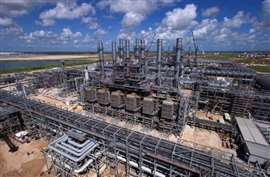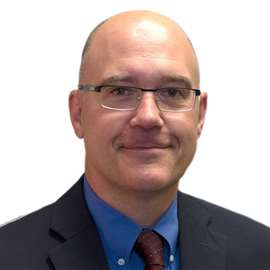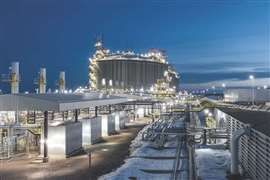Cheniere Energy outlines aggressive LNG growth strategy amid strong global demand signals
August 15, 2025
Company sees platform expansion to 75 mtpa by early 2030s, eyes further growth toward 100 mtpa
 Cheniere Energy outlines aggressive LNG growth strategy amid strong global demand signals. (Image: Cheniere Energy)
Cheniere Energy outlines aggressive LNG growth strategy amid strong global demand signals. (Image: Cheniere Energy)
Cheniere Energy is leveraging its extensive U.S. liquefied natural gas (LNG) export platform to accelerate growth while maintaining a disciplined, phased approach to development. Building on recent capacity additions, the company expects to expand production to approximately 75 million tonnes per annum (mtpa) by the early 2030s, with optionality for further growth toward 100 mtpa over time.
President and CEO Jack Fusco told investors the strategy centers on fully exploiting Cheniere’s brownfield advantages at its Sabine Pass (Louisiana) and Corpus Christi (Texas) sites. The company has filed for permits to maximize each site’s capabilities, targeting up to 20 mtpa of additional capacity per location. By optimizing existing infrastructure and deploying proven technology, Cheniere expects to deliver cost-competitive, accretive growth projects while minimizing execution risk.
Current projects and capacity gains
In June, Cheniere took a final investment decision (FID) on its Corpus Christi Midscale Trains 8 & 9, a roughly 5-mtpa project expected online by 2028. The trains will be built under a lump-sum turnkey contract with Bechtel, incorporating debottlenecking investments that will boost output across the Stage 3 complex. This follows substantial progress on Corpus Christi Stage 3, now nearly 87% complete, with Train 2 achieving substantial completion in August—less than half the commissioning time of Train 1. Cheniere expects the first three Stage 3 trains to reach substantial completion by year-end, with Train 4 potentially in commissioning by then as well.
Alongside greenfield additions, Cheniere is increasing production from its nine large-scale existing trains through debottlenecking, raising per-train capacity to 5.0–5.2 mtpa and adding about 1 mtpa overall. These optimizations, Fusco said, are “economically adding” capacity without new trains, supporting stronger run-rate forecasts.
The company is preparing for its next large-scale buildout with Corpus Christi Stage 4 and the Sabine Pass Expansion Project, both in early regulatory stages. Each is designed to be as brownfield as possible—initial phases could involve a single train that uses existing tanks, berths, and pipeline connections, minimizing costs.
Stage 4 at Corpus Christi will employ ConocoPhillips’ optimized cascade design across four large-scale trains, plus two LNG tanks, a new berth, and supporting infrastructure. The Sabine Pass Expansion includes three large trains and supporting systems. While permitting covers far more capacity—enough to push the company over 100 mtpa—Cheniere plans to advance in phases, prioritizing projects that meet strict investment return thresholds and compete favorably with share repurchases for shareholder value.
Commercial momentum
Cheniere continues to secure long-term sales and purchase agreements (SPAs) that underpin expansion. In the second quarter, it signed its first long-term contract with Japan’s JERA, one of the world’s largest LNG buyers, for 1 mtpa through 2050. The deal follows a string of long-term agreements with Asian buyers since 2021, totaling more than 9 mtpa.
Management expects Asia to remain the primary driver of global LNG demand growth, representing nearly 90% of the projected increase through 2040, fueled by rapid urbanization, industrialization, and coal-to-gas switching. The region is adding around 280 mtpa of regasification capacity—on top of 115 mtpa built since 2020—signaling long-term commitment to LNG imports.
Europe also remains a key market, with Cheniere supplying more than two-thirds of its volumes there since 2022. Reduced Russian pipeline imports, lower renewable output, and seasonal storage needs drove European LNG imports 25% higher year-over-year in the first half of 2025. Company executives expect Europe’s “call on LNG, and specifically on U.S. cargoes,” to remain high, especially if proposed EU legislation to ban Russian gas imports by 2026 passes.
Market outlook
Chief Commercial Officer Anatol Feygin described the LNG market as “delicately balanced” amid geopolitical tensions, weather variability, and infrastructure constraints. Prices in Asia (JKM) and Europe (TTF) strengthened year-over-year in the second quarter, supported by tight supply, although they moderated from Q1 highs.
Feygin sees near-term demand met by a wave of new liquefaction capacity—about 88 mtpa globally—coming online in 2025–26, much of it from North America. This should improve affordability and reduce the impact of lost Russian flows. Longer-term, Asia’s structural demand growth and diversification needs will underpin contracting activity, with U.S. LNG maintaining a central role due to its flexibility and reliability.
Financial strength and capital allocation
For Q2 2025, Cheniere reported $1.4 billion in adjusted EBITDA, $920 million in distributable cash flow (DCF), and $1.6 billion in net income. It tightened full-year EBITDA guidance to $6.6–7.0 billion and raised DCF guidance to $4.4–4.8 billion. Production for the year is forecast at 47–48 mtpa, with nearly all 2025 capacity already contracted.
The company’s capital allocation plan—updated in June—targets over $25 billion in available cash through 2030, or more than $25 per share in run-rate DCF by the early 2030s. Priorities include funding growth, returning capital via buybacks and dividends, and maintaining a strong balance sheet.
Cheniere has deployed more than $16 billion of its initial $20 billion 2026 capital allocation target, including $900 million in growth capex in Q2, primarily for Stage 3 and Trains 8 & 9. It repurchased $306 million in stock in Q2 and plans to grow its dividend roughly 10% annually through decade’s end.
Chief Financial Officer Zach Davis emphasized that expansions will be largely self-funded. Even with first-phase projects at both Sabine Pass and Corpus Christi, Cheniere expects annual equity funding needs of less than one-third of run-rate DCF. The company is targeting 6–7x capex-to-EBITDA returns on new projects, holding expansions to the same accretive standards as buybacks.
Competitive positioning
Cheniere’s leadership sees reliability, scale, and contractual flexibility as differentiators in a competitive market. The company has delivered over 4,200 cargoes without missing a foundation customer delivery and now serves more than 45 countries. Its contracts are predominantly long-term, with counterparties valuing its operational performance and security of supply.
On technology, Cheniere is pivoting back to larger ConocoPhillips cascade-design trains after experimenting with midscale units, citing better economies of scale in both construction and operation. The decision reflects lessons learned since 2017, when the company anticipated smaller, more short-term market opportunities that did not materialize.
While growth to 75 mtpa is well mapped, executives caution that the move to 100 mtpa will depend on market conditions, SPA pricing, and construction costs. Rising EPC costs, supply chain dynamics, and competition for labor and materials could shape investment timing.
Davis said future phases beyond the first train at each site would require additional infrastructure—such as interstate pipelines or extra tanks—that could alter project economics. “We’re not here today to tell you we’re absolutely 100% FID-ing those projects in the near term,” he said, underscoring that expansion will be deliberate and returns-driven.
In the meantime, Cheniere will continue executing its current buildout, deepening its global commercial relationships, and positioning itself as a core supplier in a rapidly evolving LNG market.
“We remain committed to creating sustainable long-term value for our stakeholders, while safely operating our platform in order to supply our global customer base with secure, reliable and flexible LNG for decades to come,” Fusco said.
MAGAZINE
NEWSLETTER

CONNECT WITH THE TEAM









